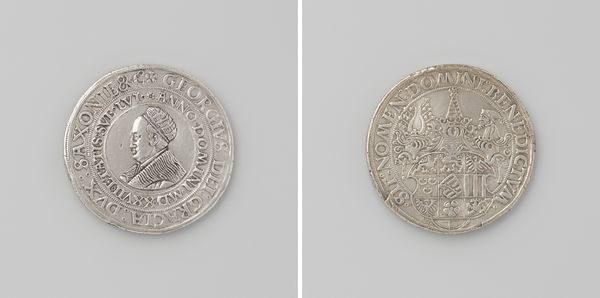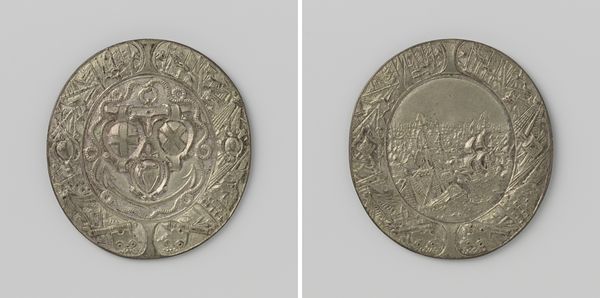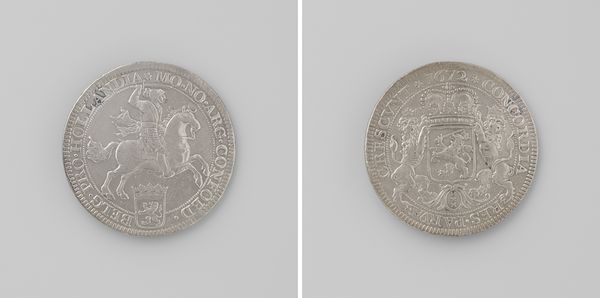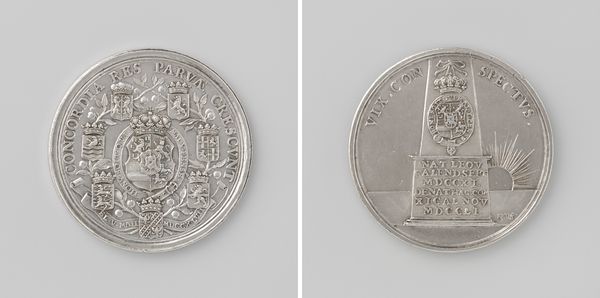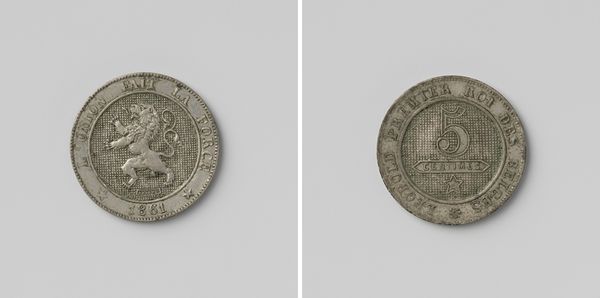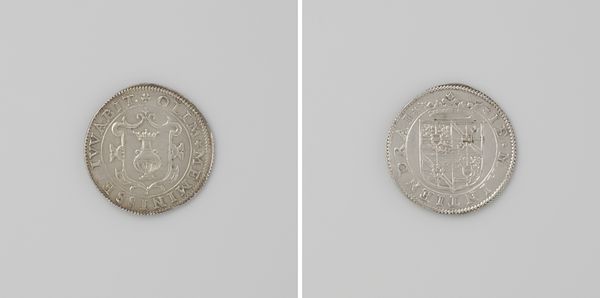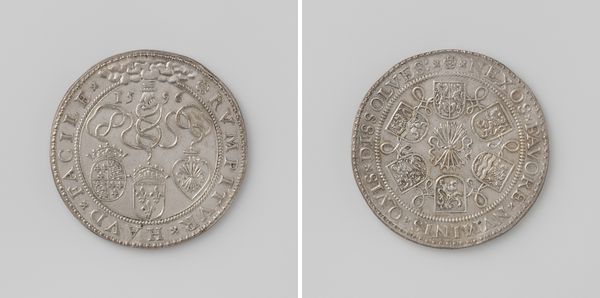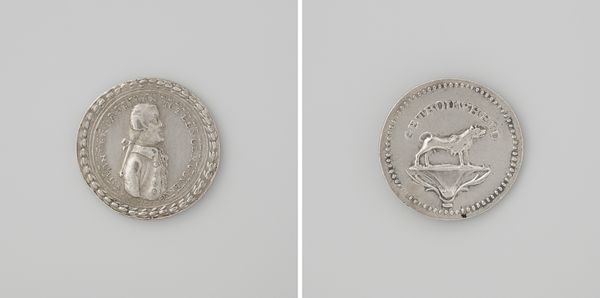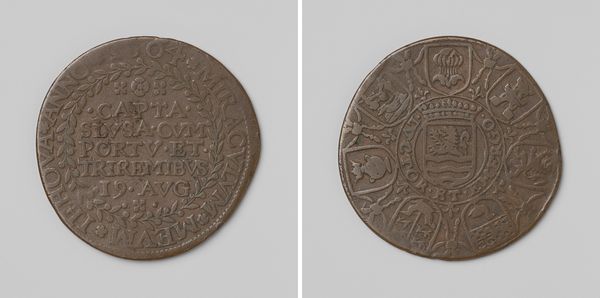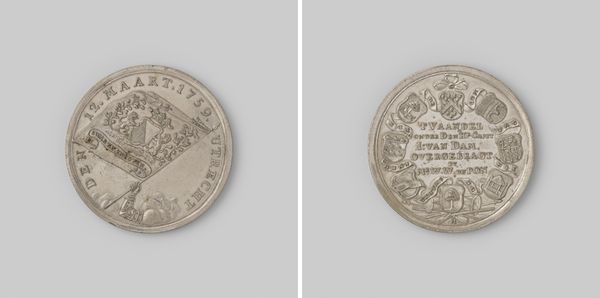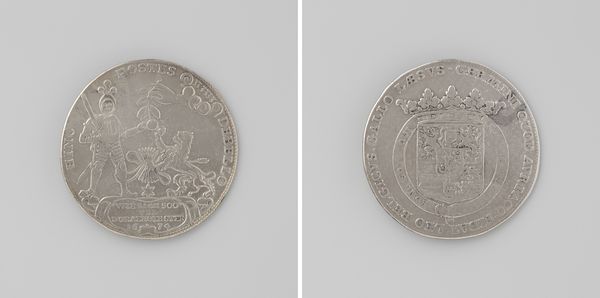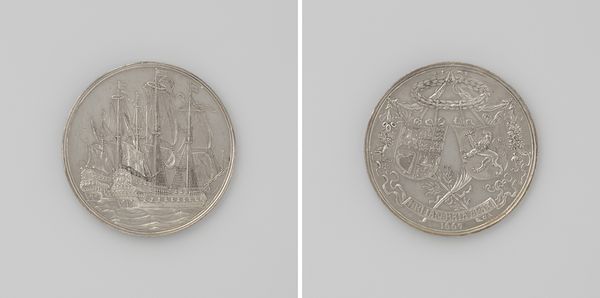
Daalder, noodmunt uit Groningen, geslagen tijdens het beleg (voorzien van het portret van Karl Rabenhaupt) 1672
0:00
0:00
print, metal, engraving
#
portrait
#
baroque
# print
#
metal
#
old engraving style
#
history-painting
#
engraving
Dimensions: height 4.7 cm, width 4.7 cm, weight 28.25 gr
Copyright: Rijks Museum: Open Domain
This silver 'Daalder' emergency coin was struck in Groningen by an anonymous maker during the siege of 1672. Its images and materials embody a complex story of social, political and military conflict in the early modern Netherlands. The coin is a cultural artifact that goes beyond its mere monetary value. One side features the portrait of Karl Rabenhaupt, the military commander who successfully defended Groningen against the invading forces of the Bishop of Munster. By placing Rabenhaupt’s portrait on the coin, the city of Groningen was valorizing a local hero and reinforcing their own political autonomy. Emergency coins were often made from readily available materials, indicating a breakdown in normal economic and political order. The square shape of this coin reflects the urgency of the situation and the limitations of available resources during the siege. For historians, objects like this provide valuable insight into the economic and social impact of war, highlighting the ingenuity and resilience of communities under duress. By consulting archival records, military histories, and numismatic studies, we can better understand the rich historical context embedded in this small object.
Comments
No comments
Be the first to comment and join the conversation on the ultimate creative platform.
